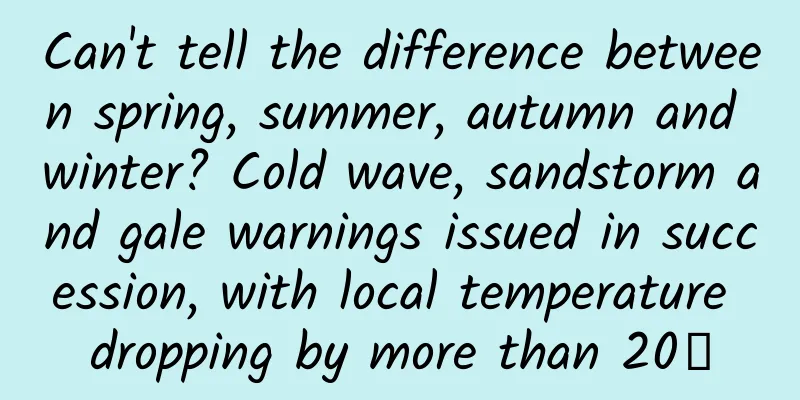Heavy rain is coming! How to deal with and prevent the large-scale continuous heavy rainfall in South China?

|
In recent days, many parts of southern China have been hit by heavy rain and severe convective weather, and some areas such as Guangdong and Jiangxi have been severely flooded. On the 20th, heavy to torrential rains occurred again in southern Jiangnan and southern China. Parts of eastern Guangxi, central Guangdong, southwestern Hunan, southern Jiangxi and other places reached the level of torrential rain (100-250 mm), and extremely heavy rains (252-261 mm) occurred in Zhaoqing and Foshan, Guangdong; the maximum hourly rainfall in central Guangxi and central Guangdong was 70-100 mm, and 140.8 mm in Beihai, Guangxi; parts of central and southern Yunnan, central Guangxi, central and northern Guangdong, southern Fujian and other places experienced thunderstorm gales of level 8-10, and locally level 11. Image source: China National Meteorological Administration The Central Meteorological Observatory continued to issue an orange warning for heavy rain and a yellow warning for severe convective weather at 06:00 on April 21: It is predicted that from 08:00 on April 21 to 08:00 on April 22, heavy to torrential rain will occur in the central and eastern and southern parts of Jiangnan, the central and eastern and southern parts of South China, among which parts of the central and southern Guangdong will have torrential rain (100-200 mm). It is predicted that from 08:00 on April 21 to 08:00 on April 22, parts of central and southern Guangxi, central and southern Guangdong and other places will have 8-10 degree thunderstorm gale or hail weather, among which parts of southeastern and southern coastal areas of Guangxi, central and southern Guangdong and other places will have 10 degree thunderstorm gale or above, and the local wind force may reach 11 or above; parts of central and southern Guangxi, Guangdong, southern Hunan, southern and eastern Jiangxi, western Fujian, southwestern Zhejiang and other places will have short-term heavy rainfall with hourly rainfall greater than 20 mm, among which parts of southeastern and southern coastal areas of Guangxi, central and southern Guangdong and other places will have maximum hourly rainfall greater than 50 mm, and may reach 80 mm or more in some local areas. Image source: China National Meteorological Administration As the warm and humid air flow continues to grow in strength and with the cold air infiltrating from the south, an obvious shear system has formed and is being maintained stably from Guizhou to the south of the Yangtze River. The power, heat and water vapor conditions are all excellent. Therefore, the eastern part of the south of the Yangtze River to the central and northern parts of South China will continue to experience heavy rainfall. Meteorological experts warn that recent rainfall in Guangxi, Guangdong, Hunan, Jiangxi and other places has been heavy and the rainfall areas have highly overlapped. The public needs to be highly vigilant about disasters such as mountain torrents, mud and rock flow, and landslides that may be caused by heavy or continuous rainfall , avoid going to mountainous areas and areas prone to geological disasters, and take precautions against the adverse effects that may be caused by strong convective weather. Why does it often get dark in a second during a thunderstorm? When convection movement develops vigorously, water droplets in the thunderstorm cloud are constantly carried up by stronger updrafts, and this process is repeated. Small water droplets integrate into large water droplets, and there may also be ice crystals or small hail in the sky. These large water droplets and large ice crystals gather in large numbers, blocking the sunlight from penetrating while also refracting a lot of sunlight, causing the entire thunderstorm cloud to be black. The lower the clouds are, the darker they look, and the sky is as dark as night. Copyright images in the gallery. Reprinting and using them may lead to copyright disputes. When will the rainstorm subside? It is expected that on the 22nd, as the cold air moves southward, the scope of heavy rainfall in the Jiangnan and South China areas will shrink significantly, and the rain belt will temporarily move south to the coast of South China; on the 23rd, the intensity of the heavy rainfall will further weaken. However, from the 24th to the 26th, there will be another significant rainfall process in Jiangnan, South China and Guizhou, including heavy rain in parts of central and southern Jiangnan and South China, and local torrential rain. The area where heavy rainfall will fall is close to that in the previous period, so please pay attention. How to scientifically respond to and prevent “bad-tempered” severe convective weather? Comprehensive sources: Ministry of Emergency Management, Central Meteorological Observatory, China Weather, etc. |
<<: The teeth you use to eat may have been fish scales a long time ago!
Recommend
Business models are being explored, but Android game consoles are not up to the task
The Spring Festival holiday has always been a tim...
Android is not secure, Google is not clear
The twenty-six letters of the alphabet have all b...
"Space Express" is delivered! The launch of Tianzhou-7 was a complete success
At 22:27 on January 17, the Long March 7 Yao-8 ca...
Count down 8 types of operation tools you must learn
As the saying goes, if you want to do your work w...
BYD's monthly sales exceeded 300,000 units. Huawei is the key to achieving the goal of 4 million units next year
Data shows that BYD's auto sales in November ...
Microsoft Cortana released iOS and Android versions only available in China and the United States
After several months of beta testing, Microsoft&#...
Apple releases iOS 15.3 RC and closes iOS 15.2 verification channel
According to the update file, this update mainly ...
ByteDance denies Microsoft's attempt to purchase TikTok's global business. What are TikTok's businesses?
ByteDance denies Microsoft's bid for TikTok&#...
Product promotion from 0 to 1: How to acquire seed users?
Today we will introduce in detail how to write co...
The Chinese team won the gold medal in short track speed skating relay. Do you know the classification and differences of ice skates?
On March 17, Beijing time, in the men's 5000m...
Over-reliance on apps leads to industry barriers for smart homes
"Survey data from Zhongguancun Online shows t...
Why the smartphone market keeps falling, these three friends may have the truth
The market seems to really like playing jokes on ...
If the "marathon runners" of the animal world, the slender-horned gazelle and the cheetah, had a speed contest, who would win?
When it comes to Tibetan antelopes, everyone prob...
Does Starbucks have "medium cup discrimination"? No, this is their marketing!
A while ago, it was the Christmas green cup that ...









